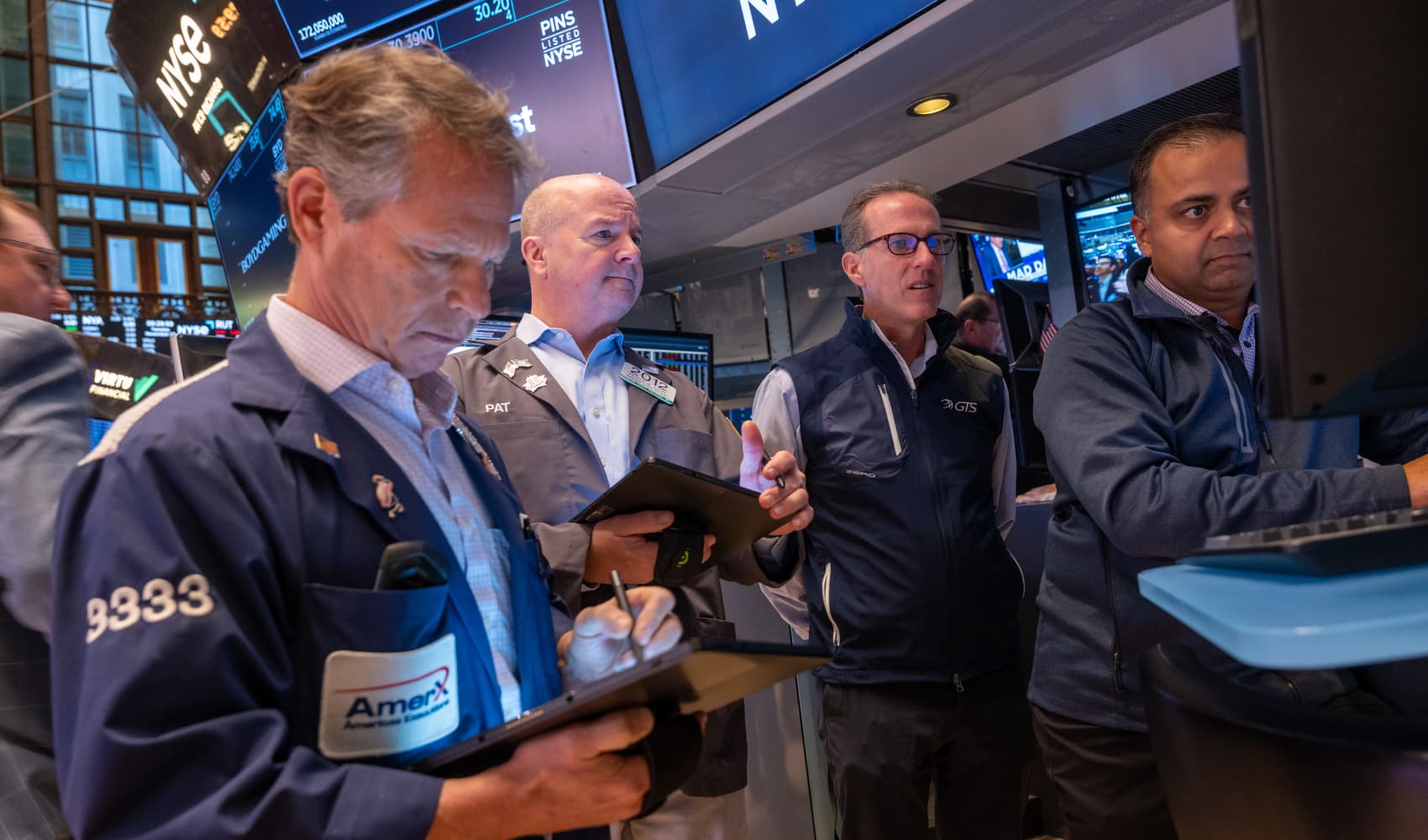
Maybe this is a temporary respite from ever-higher prices or just maybe — as some of us have forecast all along — the economy hasn't been going through a 1970s style inflation spiral.
Instead, it was going through a pandemic and war-related disruption that boosted inflation for a limited time before the economic world edged back toward normal.
Certainly, Friday's inflation data, included in the personal income and spending report, showed a marked deceleration in so-called personal consumption expenditure inflation.
Kathy Jones, chief fixed income strategist for the Schwab Center for Financial Research, noted that core PCE is annualizing at a less than 3% rate. That's below where most forecasters expected it to be at this point in the cycle.
Get top local stories in Connecticut delivered to you every morning. Sign up for NBC Connecticut's News Headlines newsletter.
Over the past five months, many measures of inflation have fallen more quickly than forecast, including those most closely watched by the Federal Reserve.
Metrics show that prices are cooling
Reviewing rent data, whether from the Cleveland Federal Reserve and Bureau of Labor Statistics' new measurement system or from Redfin, rents and housing prices are falling rapidly which will further pressure both headline and core inflation readings in the months ahead.
Money Report
Add to that a Wall Street report that confirms what some of us have been noticing for months — that the global supply chain is back to normal.
Shipping rates are well below prepandemic levels, cargo backlogs have disappeared, and goods are traveling around the world to ports of call.
This is all good news, irrespective of what many doomsayers continue to forecast: sticky inflation, slower growth (certainly not yet evident, though recession risk remains high in 2023) and the need for the Fed to continue tightening regardless of what they perceive as only temporary progress on inflation.
I say, the Fed has done its job. It now risks doing too much and pushing the U.S. economy into an entirely unnecessary recession next year.
Sadly, that clouds the visibility around next year's economic and market behavior.
While it's rare to have consecutive annual declines in the stock market, it's not impossible if the Fed fails to consider the vast improvements in the inflation outlook and insists on raising rates further.
That comes at a time when seasonal and historical patterns — like the presidential cycle — favor a positive stock market performance in 2023.
U.S. investors have seen asset inflation disappear quite rapidly in 2022 as trillions of dollars have been hacked off U.S. equity market capitalization.
Speculative sentiment toward cryptocurrencies, meme stocks, special purpose acquisition companies and IPOs is all but gone, reducing systemic financial risk and recreating value in long-dated assets.
The labor situation
The issue of wage inflation, which the Fed continues to fight, would be solved with more generous immigration reform, but absent that, it will be solved with technology.
First, as was the case in 2021, U.S. population growth was abysmal this year, rising only 0.4%, according to the U.S. Census Bureau.
In 2021, the U.S. population grew at its slowest pace in the history of the U.S.
Labor force and population growth are being adversely affected by slower-than-expected family formation and immigration constraints. Life expectancy has also been declining due to Covid, as well as opioid overdoses that totaled over 100,000 in 2021, according to the U.S. Centers for Disease Control and Prevention. Millions are also facing long Covid, which is likely keeping many out of the labor force.
Some in Congress, like Jim Jordan, R-Ohio, have tweeted their opposition to letting more immigrants into the U.S., saying that all open jobs should go to Americans first.
Well, they have … all of them.
There are roughly 5 million more open jobs than there are unemployed Americans, so unless we start delivering babies who are old enough to enter the workforce at birth, clone existing adults or find millions of people refusing to go to work, we need people — low, medium and highly skilled workers — in large quantities.
Disinflationary drivers
On the technology front, entry-level jobs are being challenged by technological advances. McDonald's, for instance, is experimenting with a partially automated store in Texas.
While humans still prepare the food, orders are taken by, essentially an A.I.-driven device, payment is made electronically and the food is delivered via conveyor belt, inside the store for takeout, or through the drive-thru window in the same manner.
There is no interaction with humans in the process.
If other quick-service restaurants were to follow this, it would be wildly disinflationary.
China, of course, remains a wild card in questions about global inflation, disinflation or outright deflation.
After abandoning its zero-Covid policy, as many as 248 million Chinese citizens have contracted Covid since the start of December with as many as 37 million getting sick in a single day, Bloomberg News reported.
The much-heralded reopening of China has yet to materialize.
There's more disinflation likely coming from China than growth and inflation.
Given recession risk in Europe and the United Kingdom, a continued war in Ukraine and unfriendly central banks, 2023 could be as rough as 2022.
All that makes for a very difficult outlook in the new year.
Simply put, in the midst of a national bomb cyclone, 2023 policies, economic and market action, is "cloudy with a chance of meatheads."
— Ron Insana is a CNBC contributor and a senior advisor at Schroders.






